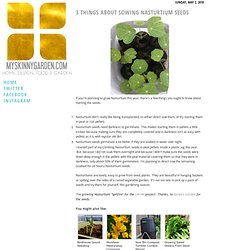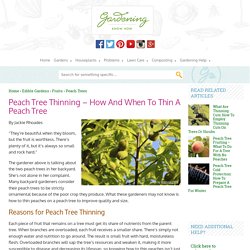

Lavender Plants - Growing Lavender Anywhere. Jade Plants & Light Conditions. Easy Succulents- the Jade Plants. Editor's Note:This article was originally published on April 12, 2009.

Your comments are welcome, but please be aware that authors of previously published articles may not be able to respond to your questions.) In the many years I have been growing succulents, I have learned that some are very difficult to keep alive, due in part to my lack of a shade structure or greenhouse, lack of knowledge and overall laziness. So saying a plant is difficult may not mean much to someone with a lot of experience and who has the facilities, knowledge and is willing to put the effort into keeping something alive and happy. However, I have also learned in my years of growing and killing plants that some succulents are exceptionally easy.
If they are easy for me, then they are undoubtedly easy for most anyone else. Crassula ovata, referred to as Jade Plant, Jade Tree, and Money Tree, is a very common plant, available at most garden outlet centers and local nurseries, at least here in California. Staghorn Ferns 101. Staghorn ferns are called Platyceriums.

They are Old World tropics native to Africa, northern Australia, and Southeast Asia.Featured PlantsPlatycerium Andinum: This large gorgeous fern looks great in a hanging basket but can also be hung against a wall because all the leaves are on one side. Platycerium Elephantotis: The fronds look like elephant ears. Platycerium Coronarium: This crown-like fern sits on top of a slatted square mount and drapes over. Platycerium Bifurcatum: From the mother specimen, a pup can be cut off and used in a wall mount. This mother plant is huge, but is still a hanging specimen. Platycerium Vassei: This is a wall-mounted, unusual staghorn fern because the back frond is green and not brown. Sensitive Plant – Mimosa pudica.
The Sensitive Plant has delicate, fern-like foliage and produces pretty, ball-shaped pink flowers from August to October.

The Sensitive Plant comes from Brazil where it forms thick bushes on the plains. Lavenders Explained: A Guide to the most popular Lavandulas / Armstrong Garden Centers. There are more than thirteen types of lavenders and many more named lavender varieties which can sometimes be overwhelming.

Here, Armstrong Garden Centers simplifies lavenders so that selecting those that are best for you becomes easier with guide to Lavender. Types of LavendersLavenders (Lavandula is their botanical name) commonly sold in garden centers can be grouped into six main types: English, French, Spanish, sweet, fernleaf and lavandin. There are others, but these are the most popular. English Lavender (L. angustifolia)This is the wonderfully fragrant lavender commonly dried for sachets and decorations.
Redding. Q.

My lavender is looking raggedy. What can you tell me about pruning it so it will look good next year? A. Pruning is essential to keeping a young, healthy and vigorous lavender bush. Unpruned lavenders tend to become woody at the center. 3 Things About Sowing Nasturtium Seeds : My Skinny Garden. If you're planning to grow Nasturtium this year, there's a few things you ought to know about starting the seeds.Nasturtium don't really like being transplanted, so either direct sow them, or try starting them in peat or coir pellets.

Nasturtium seeds need darkness to germinate. This makes starting them in pellets a little trickier because making sure they are completely covered and in darkness isn't as easy with pellets as it is with regular ole dirt. Nasturtium seeds germinate a lot better if they are soaked in water over night. I started part of my Climbing Nasturtium seeds in peat pellets inside a plastic jug this year. But, because I did not soak them overnight and because I didn't make sure the seeds were down deep enough in the pellets with the peat material covering them so that they were in darkness, only about 50% of them germinated.
Nasturtiums are lovely, easy to grow from seed, plants. 5 Easy-to-Grow Vegetables for the Beginner Gardener. Trust me, gardening can be easy!

A lot of people, myself included, procrastinate when starting their first garden. The fear of failure or past “brown-thumb” experiences seems to hold us back in the backyard gardening department. But no longer! Thinning A Peach Tree: How To Thin Peaches. By Jackie Rhoades “They’re beautiful when they bloom, but the fruit is worthless.

There’s plenty of it, but it’s always so small and rock hard.” The gardener above is talking about the two peach trees in her backyard. She’s not alone in her complaint. Blueberry: Sharpblue Harvesting - Plant Guide. Ripening Look for plump blueberries with a gray-blue color, they taste the best.

Berries with any hint of red aren't fully ripened. How to Grow Apples. Anyone know of a way to use underripe peaches? Quick Tip: What To Do with Unripe Fruit. Though the fruits are starting to roll in at nation-wide farmer's markets, it's still early enough in many places that an unripe peach or too-tart apple might make its way into the mix.

If you find yourself with such a fruit, don't throw it away: cook it! Here's how... While cooking doesn't magically cause unripe fruit to ripen, it does do three things: 1. It enhances sweet and sour flavors in the fruit.2. OK to water at night? Salvia hispanica. Salvia hispanica, commonly known as chia, is a species of flowering plant in the mint family, Lamiaceae, native to central and southern Mexico and Guatemala.[2] The 16th-century Codex Mendoza provides evidence that it was cultivated by the Aztec in pre-Columbian times; economic historians have suggested it was as important as maize as a food crop.[3] Ground or whole chia seeds are still used in Paraguay, Bolivia, Argentina, Mexico and Guatemala for nutritious drinks and as a food source.[4][5] Etymology[edit] The word "chia" is derived from the Nahuatl word chian, meaning oily.[1] The present Mexican state of Chiapas received its name from the Nahuatl "chia water" or "chia river".
It is one of two plants known as chia, the other being Salvia columbariae, commonly known as golden chia. Description[edit] Chia is an annual herb growing up to 1.75 metres (5.7 feet) tall, with opposite leaves that are 4–8 cm (1.6–3.1 in) long and 3–5 cm (1.2–2.0 in) wide. Growing Grapes for Beginners. Once you have decided on the type of grape you want to plant, one of the first steps in growing grapes and getting your grape venture underway is selecting the location for the vines. It is very important to ensure that you have adequate soil. You will need to fertilize the soil with either store purchased or natural fertilizers to give your vines a good healthy beginning. Many vine growers believe that organic or natural fertilizers work best for grape vines. Growing Tea Plants. September 6th, 2013 I drink a fair amount of tea, as you probably know if you’ve been hanging around my blog long. Recently I read this article about pesticides and tea, which kind of freaked me out.
I decided the only solution was to start growing my own tea. Then it wouldn’t have any pesticides on it—maybe just a little dog pee. I found Camellia Forest, an online nursery that sells tea plants (Camellia sinensis), and ordered three. Hopefully next year I’ll get to harvest my own tea leaves and write up a post about preparing them. The Fruit Tree Planting Foundation - Resources. During the first 3 to 4 years in the life of a newly planted fruit tree, it is important to follow the cultural steps outlined below in order to ensure success in growth, development, and quality fruit production. We discuss the most important aftercare principles below, assuming proper planting technique was applied as described in the factsheet entitled “Planting Containerized Fruit Trees. " Watering: Newly planted trees only have the roots that grew in their containers or if planted as “bare root,” only those that are visible. Once planted, keeping this rootball moist is critical for survival.
How Often Should You Water Peach Trees? The Fruit Tree Planting Foundation - Resources. Morning vs Evening Watering: Does it matter? Well, does it? If you adhere to the common advice from WiseGEEK then we must answer in the affirmative. The most common response to this question is: Plants should be watered in the morning to avoid fungal root diseases. Does the watering time of your plants matter? The logic plays out like this – if you water your plants in the morning then they will have time to dry out before nightfall.
For at evening, once the sun has set, plants are unable to deal with water around their roots and become susceptible to all manner of fungal diseases. Ceanothus. The genus is confined to North America, with the center of its distribution in California. Some species (e.g. C. americanus) are found in the eastern United States and southeast Canada, and others (e.g. Irrigation - The California Backyard Orchard. Fruit and nut trees will grow well if irrigated regularly. How to Divide Aloe Vera and Other Succulents. Growing and Using Aloe Vera. Blueberry Plant Care - Easy Steps to Keep Plants Healthy. How Much Water Should One Give a Fruit Tree? Tips for Growing Great Carrots. October 4th, 2011 Yesterday, some readers asked if I had any tips for growing great carrots, so I thought I’d share a few things that work well for me.
I’m by no means an expert carrot grower and sometimes things work well in one place and not in another. If you’ve had difficulties growing carrots, keep trying new varieties and different methods, keep amending your soil, eventually you’ll find a variety that works for you. Overwatering & Peach Trees. How to Grow Peaches. How to Build a Raised Garden Bed for Under $15. The 35 Easiest Container and Pot Friendly Fruits, Vegetables and Herbs - Page 2 of 3. Bananas If you love bananas and even if you don’t live in the tropics, you can grow a banana plant inside the house, even during the cold winter months. Dwarf banana plants grow perfectly inside and they are perennials so once you plant them, you’ll have bananas year after year. How To Grow Your Own Endless Supply Of Berries. Zip Code 94947 Novato Hardiness Zone and Gardening Info. Blueberry: Sharpblue Overview - Plant Guide. Blueberry: Southern Highbush Southern Highbush blueberries are hybrids of the Northern Highbush blueberry (V. corymbosum) with various southern species (V. ashei , V. darrowi).
They are more tolerant of heat and mild winters than the above and do well in warmer and drier areas. They are also less fussy about soil conditions. They are a fairly recent development but have had a big impact because they greatly increase the area where blueberries can be grown. Diynetwork. How to Grow Blueberries - Growing the Superfruit. This Little Weed is One of the Most Useful Medicines on the Planet. Growing and Using Aloe Vera. Growing With Science Blog. Growing Fruit Trees From Seeds. How to Sprout an Apricot Pit. Wildflower Seed Bombs. Grow Where You’re Planted: Tips For Small Space Gardening. Loula NaturalLoula Natural. Vegetables You Can Grow in The Shade. Growing Strawberries. How to Grow a Fig Tree From a Shoot. How to Grow Strawberries - Edible Gardening - Miracle-Gro. How to Propagate Succulents from Leaves: 5 Steps.
Urban Prepper Chick - Learn as I Go: Grow your own sugar. Blueberry Care Tips. What Causes Peach Leaf Curling? How To Grow The Most Delicious Strawberries. Sharpblue Early Season Blueberry - Monrovia - Sharpblue Early Season Blueberry. Blueberry - Sharpblue (Early Harvest) How to Grow Raspberries - Common Sense Homesteading. 10 Tips for Growing Strawberries Like a Boss. The Skinny Gourmet: Ten Mistakes New Herb Gardeners Make (and How to Avoid Them!) Apple Mint (Mentha Suaveolens) - Uses, Health Benefits and Pictures.
Pantry Garden Herbs. 10 Indoor Plants that Help You Breathe Easy. 23 Diagrams That Make Gardening So Much Easier. Planning an Orchard. How to Grow a Cherry Tree from Seed or Pit. 5 Tips to Grow Blueberries in Pots. How To Grow an Herb Container Garden - Moms Need To Know ™ Passiflora caerulea. How Does Your Garden Grow. Herb Gardens 30 great Herb Garden Ideas - The Cottage Market. Merlin's Magickal Mistress: Top Tips. How To Improve Your Garden Soil Without A Compost Heap - Whole Food Home. Preserving Sage for Food and Medicine.